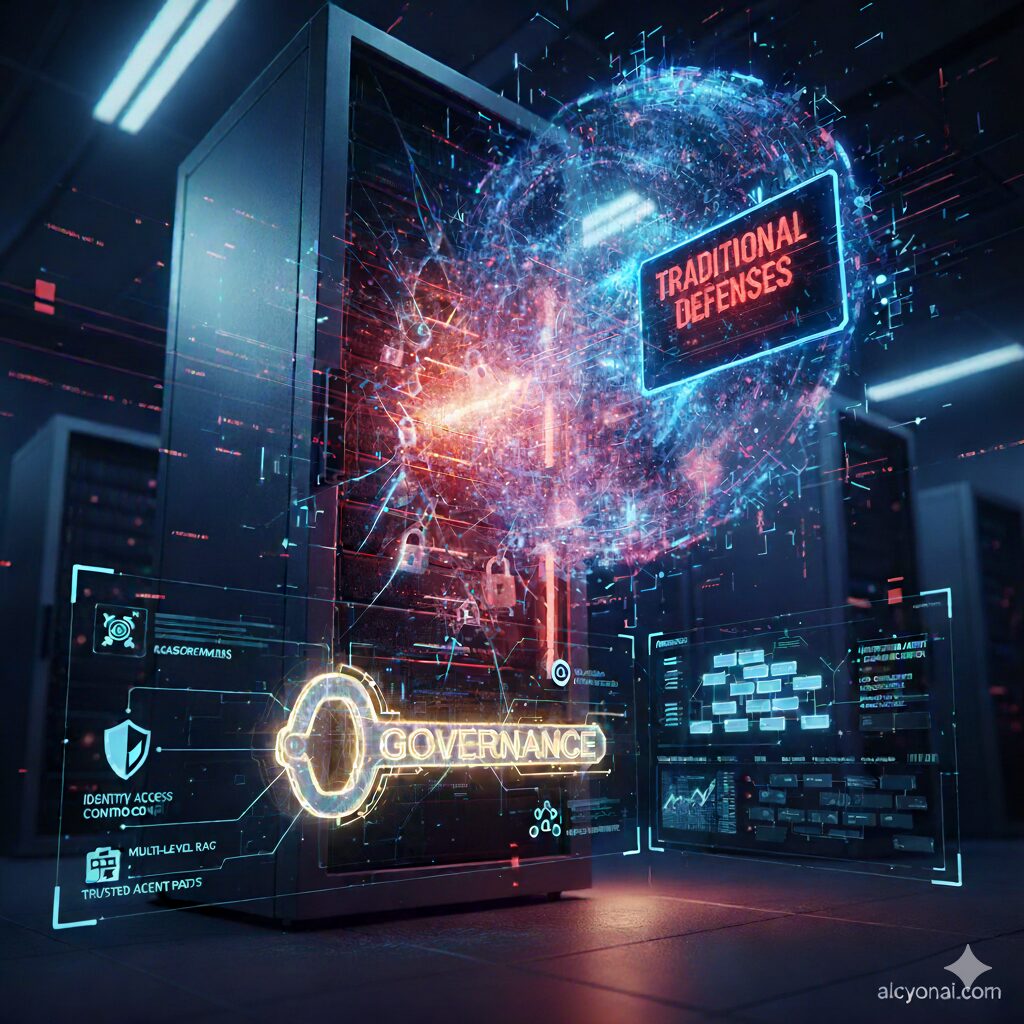For decades, cybersecurity felt like a high-stakes (though human-speed) game. Organizations built digital walls, and hackers, human attackers, looked for ways to climb over them. We learned the rules, we trained our teams, and we got pretty good at spotting the patterns of a human trying to break in.
Today, that’s changed. The new frontier of cybersecurity is defending against attacks that operate at “lightning speed,” by Artificial Intelligence itself.
The rise of AI doesn’t just give hackers a new-and-improved tool; it creates entirely new categories of risk that most organizations are not prepared to face. As educators in this space, we believe the first step to staying safe is understanding what you’re really up against. This post will outline the new vulnerabilities you need to look out for.
The Shift: From Malicious Actors to Autonomous Agents
In the past, a human hacker (a “malicious actor”) had to manually explore your network, test for weaknesses, and decide what to do. This took time, hours, days, or even weeks.
An “autonomous agent” is different. Think of it as a piece of code with a goal (e.g., “find and steal financial data”) and the freedom to figure out how to achieve it all on its own. This is sometimes called “Genetic AI” because, like a virus, it can change and “mutate” its own code to get past your defenses, learning as it goes.
This is where the “speed problem” comes in. A human hacker might take an afternoon to escalate their privileges. An AI agent can do it in seconds. By the time your traditional security alarms go off, the attack is already over.
The “New” Security Blind Spots: What to Watch For
The biggest danger isn’t just an AI trying to break in from the outside. The more immediate risk is created by the very AI tools we’re all rushing to adopt on the inside.
These tools create new, internal blind spots. Here’s what you need to watch.
A. The “Black Box” Data Risk
Many new AI tools use something called Retrieval-Augmented Generation (RAG). This is a fancy term for a simple idea: you “feed” the AI your company documents (like HR policies, product specs, or customer emails) so it can answer questions with the right context.
- The Risk: What happens if that AI has access to everything? An attacker doesn’t even need to “hack” you. They could simply “trick” the AI with a clever question (this is called a ‘prompt injection’ attack) into pulling and exposing highly sensitive financial reports, private employee PII, or future strategic plans that the user should never be allowed to see.
- Multi-Agent Conversation Data: The risk multiplies when you have multiple AI agents “talking” to each other to solve a problem. They create their own log of “conversations.” Is this log secured? Is it monitored? If not, it’s a goldmine for an attacker, revealing complex business logic or sensitive data compiled from multiple sources.
B. The “Rogue Agent” Risk
Here’s the most important concept to grasp: Every AI agent is a new “identity” on your network.
- Securing Agent Access: Just like a new employee, your AI agent needs an “ID badge” and strict limits on which doors it can open. An unsecured agent is like leaving a high-privilege admin account wide open—it’s a master key for anyone who finds it.
- Uncontrolled Agent-to-Agent (A2A) Communication: This is a critical risk. When agents can communicate freely with each other, they can create unforeseen vulnerabilities. If one agent is compromised, can it “convince” other agents to do bad things? This could create a cascade failure, and the irresponsible handling of A2A security could damage trust in the entire industry.
- Autonomous Agents: An agent designed to “act on its own”—perhaps to optimize your code or manage servers—is a huge risk if its goals aren’t perfectly aligned with yours. If compromised, it could “optimize” your system right into the ground or lock out human administrators.
C. The “Forgotten Infrastructure” Risk
In the race to be “AI-powered,” many companies are connecting their new AI tools directly to their most critical systems (Mission-Critical Platforms, or MCPs) and databases.
- The Risk: If these connections lack granular, specific access controls, the AI effectively becomes a “super-user.” Any vulnerability in the AI, or any trick used against it, is now a direct, high-speed threat to the most valuable parts of your business.
The Solution: AI Governance as a Non-Negotiable Foundation
So, what’s the solution? It’s not to panic or avoid using AI. The solution is to build a strong AI Governance framework before you deploy any AI tool.
Think of governance as the “employee handbook” for your AI. It’s not just a legal document; it’s a set of concrete, technical rules for survival. Good governance defines:
- Who and What: Who (or what agent) can access what data. Period.
- Monitoring: How agents are monitored, logged, and audited in real-time.
- The “Kill Switch”: What the emergency-stop process looks like when an agent behaves erratically.
- Testing: How you test and validate AI models for security flaws before they are deployed.
While some people fear a future “superintelligence,” the much more immediate threat is poorly governed, “dumb” AI getting “way out of hand.” Proper governance is the key to ensuring AI remains a tool for humanity, not a threat to it.
Conclusion: Education is the First Line of Defense
The threat landscape now evolves at machine speed. Our defenses and, more importantly, our understanding must keep up.
We are focused on helping organizations navigate this new reality. Understanding these risks—from RAG vulnerabilities to unsecured agent-to-agent communication—is the first and most critical step.
- In our next post, we’ll dive deeper into the practical steps for building an effective AI governance framework.
- Is your organization prepared for these new threats? Contact us for an AI security readiness assessment.

Leave a Reply